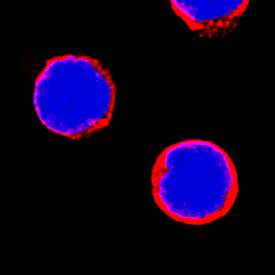抗MMR抗体(Anti-MMR, Rat-Mono antibody)
掲載日情報:2018/11/26 現在Webページ番号:33505
MMRに対する抗体(Anti-MMR, Rat-Mono )です。
※ 本製品は研究用です。研究用以外には使用できません。
追加しました。
-
2025/12/01
試薬 特別価格
[RSD]厳選 抗体&リコンビナントタンパク質 30%OFFキャンペーン[~2026/02/27]
期間:2025/12/01 ~2026/02/27
R&D Systems, Inc.(RSD)
価格
[在庫・価格 :2025年12月03日 15時55分現在]
| 詳細 | 商品名 |
|
文献数 | ||||||||||||||||||||||||||||||||||||||||||||||||||||||||||||||||||||||||||||||||||||||||||
|---|---|---|---|---|---|---|---|---|---|---|---|---|---|---|---|---|---|---|---|---|---|---|---|---|---|---|---|---|---|---|---|---|---|---|---|---|---|---|---|---|---|---|---|---|---|---|---|---|---|---|---|---|---|---|---|---|---|---|---|---|---|---|---|---|---|---|---|---|---|---|---|---|---|---|---|---|---|---|---|---|---|---|---|---|---|---|---|---|---|---|---|---|---|
|
Anti-MMR, Rat-Mono(309210) <Anti-CD206> <Anti-MRC1> <Anti-Mannose Receptor C, Type 1> |
|
3 | |||||||||||||||||||||||||||||||||||||||||||||||||||||||||||||||||||||||||||||||||||||||||||
|
|||||||||||||||||||||||||||||||||||||||||||||||||||||||||||||||||||||||||||||||||||||||||||||
|
Anti-Human MMR/CD206 MAb (Clone 309210) |
|
3 | |||||||||||||||||||||||||||||||||||||||||||||||||||||||||||||||||||||||||||||||||||||||||||
|
|||||||||||||||||||||||||||||||||||||||||||||||||||||||||||||||||||||||||||||||||||||||||||||
[在庫・価格 :2025年12月03日 15時55分現在]
Anti-MMR, Rat-Mono(309210) <Anti-CD206> <Anti-MRC1> <Anti-Mannose Receptor C, Type 1>
文献数: 3
- 商品コード:MAB2534
- メーカー:RSD
- 包装:100μg
-
価格:
¥72,000特別価格 ¥50,400 - 在庫:1個
- 納期:10日程度 ※※ 表示されている納期は弊社に在庫がなく、取り寄せた場合の目安納期となります。
- 法規制等:
| キャンペーン期間 |
2025/12/01 ~ 2026/02/27
[RSD]厳選 抗体&リコンビナントタンパク質 30%OFFキャンペーン[~2026/02/27] |
||||||
|---|---|---|---|---|---|---|---|
| 説明文 | 別名:CD206 クローン:309210 Genbank No: 4360 Protein Accession No: P22897 |
||||||
| 別包装品 | 別包装品あり | ||||||
| 法規制等 | |||||||
| 保存条件 | -20℃ | 法規備考 | |||||
| 抗原種 | Human | 免疫動物 | Rat | ||||
| 交差性 | Human | 適用 | IC | ||||
| 標識 | Unlabeled | 性状 | Protein A/G Affinity Purified | ||||
| 吸収処理 | クラス | IgG | |||||
| クロナリティ | Monoclonal | フォーマット | |||||
| 掲載カタログ |
|
||||||
| 製品記事 | M1/M2 Macrophage Activation Marker |
||||||
| 関連記事 | |||||||
Anti-Human MMR/CD206 MAb (Clone 309210)
文献数: 3
- 商品コード:MAB2534-SP
- メーカー:RSD
- 包装:25μg
- 価格:¥25,000
- 在庫:無(未発注)
- 納期:2~3週間 ※※ 表示されている納期は弊社に在庫がなく、取り寄せた場合の目安納期となります。
- 法規制等:
| 説明文 | ※受注発注品。形状:溶液または凍結乾燥 別名:CD206 クローン:309210 Genbank No: 4360 Protein Accession No: P22897 |
||||||
|---|---|---|---|---|---|---|---|
| 別包装品 | 別包装品あり | ||||||
| 法規制等 | |||||||
| 保存条件 | -20℃ | 法規備考 | |||||
| 抗原種 | 免疫動物 | Rat | |||||
| 交差性 | Human | 適用 | IC | ||||
| 標識 | Unlabeled | 性状 | Protein A/G Affinity Purified | ||||
| 吸収処理 | クラス | IgG | |||||
| クロナリティ | Monoclonal | フォーマット | |||||
| 掲載カタログ |
|
||||||
| 製品記事 | M1/M2 Macrophage Activation Marker 使いっきり抗体 |
||||||
| 関連記事 | |||||||
追加しました。
Product Details
| Species Reactivity | Human |
|---|---|
| Label | Unconjugated |
| Immunogen | Mouse myeloma cell line NS0-derived recombinant human MMRLeu19-Lys1383 (Thr399Ala) & (Leu407Phe)Accession # P22897 |
| Source | Monoclonal Rat IgG2A Clone # 309210 |
| Purification | Protein A or G purified from hybridoma culture supernatant |
| Specificity | Detects human MMR in direct ELISAs. In direct ELISAs, this antibody does not cross-react with recombinant mouse MMR. |
追加しました。
Applications and Data
| Recommended Concentration | Sample | |
| Immunocytochemistry | 8-25 µg/mL | See below |
追加しました。
Related Product & Information
| Background | MMR/CD206 |
|---|---|
| background_content | Background: MMR/CD206 The human Macrophage Mannose Receptor (MMR), also known as CD206 and MRC1 (mannose receptor C, type 1), is a 190 kDa scavenger receptor that is expressed on tissue macrophages, myeloid dendritic cells, and liver and lymphatic endothelial cells (1). It belongs to a family of receptors sharing similar protein structure that also includes DEC205, phospholipase A2 receptor, and Endo180 (2, 3). The human MMR protein is synthesized as a 1456 amino acid (aa) precursor that contains an 18 aa signal sequence, a 1371 aa extracellular region, a 21 aa transmembrane segment and a 46 aa cytoplasmic domain (4). Its extracellular region is composed of an N-terminal cysteine-rich domain, followed by a single fibronectin type II repeat, and eight C-type lectin carbohydrate recognition domains (CRD) (3, 4). Human to mouse, the extracellular region is 82% aa identical. The cysteine-rich domain mediates recognition of sulfated N-acetylgalactosamine, which occurs on some extracellular matrix proteins and is the terminal sugar of the unusual oligosaccharides present on pituitary hormones such as lutropin and thyrotropin (5). Several of the CRDs participate in the Ca2+-dependent recognition of carbohydrates showing a preference for branched sugars with terminal mannose, fucose or N‑acetylglucosamine (6). The cytoplasmic domain of MMR includes a tyrosine-based motif for internalization in clathrin-coated vesicles. Once internalized, ligands are released following acidification of phagosomes or endosomes, and the receptor is recycled to the cell surface (3, 7). MMR mediates phagocytosis upon binding to target structures that occur on a variety of pathogenic microorganisms including Gram-negative and Gram-positive bacteria, yeasts, parasites, and mycobacteria. MMR also functions to maintain homeostasis through the endocytosis of potentially harmful glycoproteins associated with inflammation (2, 3). |
追加しました。
製品情報は掲載時点のものですが、価格表内の価格については随時最新のものに更新されます。お問い合わせいただくタイミングにより製品情報・価格などは変更されている場合があります。
表示価格に、消費税等は含まれていません。一部価格が予告なく変更される場合がありますので、あらかじめご了承下さい。






